By John Meyer
[Editor’s Note: In the eight-year secret war fought by Green Berets during the Vietnam War across the fence in Laos, Cambodia and North Vietnam from 1964-1972 under the aegis of the Military Assistance Command Vietnam – Studies and Observations Group (SOG), no mission was more dangerous than a Bright Light Mission. Heavily-armed SOG recon teams were sent in to find downed pilots, relieve recon teams surrounded by enemy troops or to recover the dead and wounded. The Green Berets carried no food and only one canteen of water. The rest of their load consisted of weapons, ammunition, hand grenades, and sometimes body bags. This is the first in a series of SOFREP stories of what led to the Bright Light mission that haunts SOG Green Beret SSG James H. Shorten (Jones) to this day and drives him to return to Cambodia for an Air Force pilot left behind, who is among the 1,602 MIAs in Southeast Asia (SEA).]
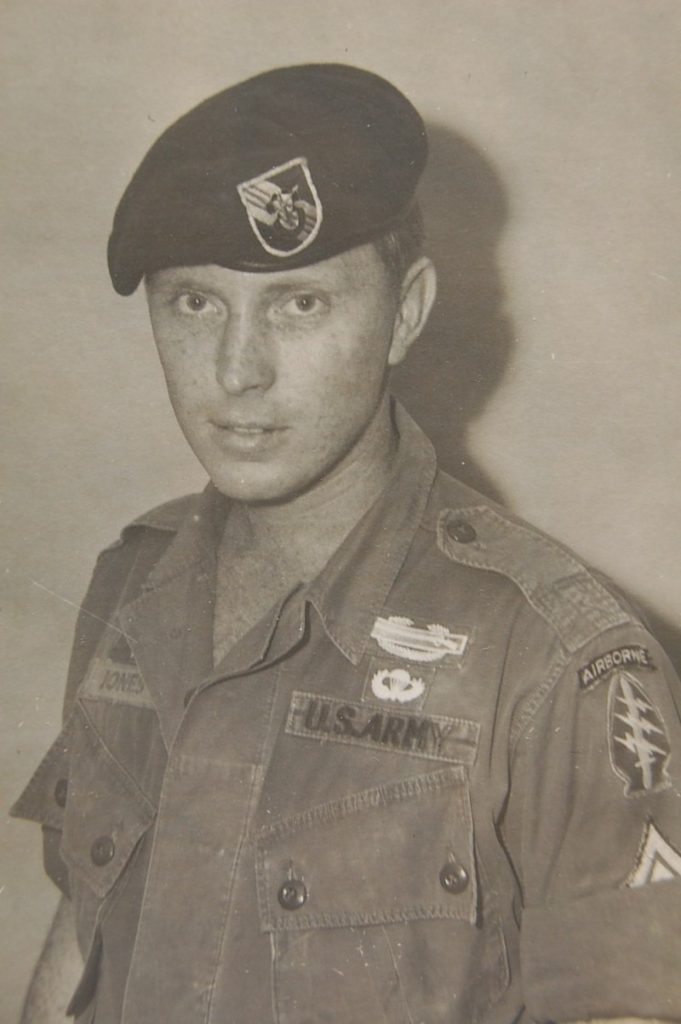
James Jones / Shorten
As April 1970 wound down, RT Delaware was on stand down at the top-secret SOG compound in Kontum, Command and Control Central (CCC) when the recon company first sergeant asked its team leader (One-Zero) Green Beret SSG James H. Shorten (Jones) if he would fill in as the team leader on RT Illinois for Bright Light stand by duty at Dak To, the launch site for CCC teams for missions across the fence into Laos or Cambodia. RT Illinois One Zero SSG Steve Keever was on leave and experienced One-Zeros were scarce at that time due to casualties, disease, annual rotations and the extremely deadly nature of SOG missions. Shorten said yes and took RT Illinois up to Dak To, where CCC Bright Light teams were regularly based in order to have a quicker response time in either Laos or Cambodia.
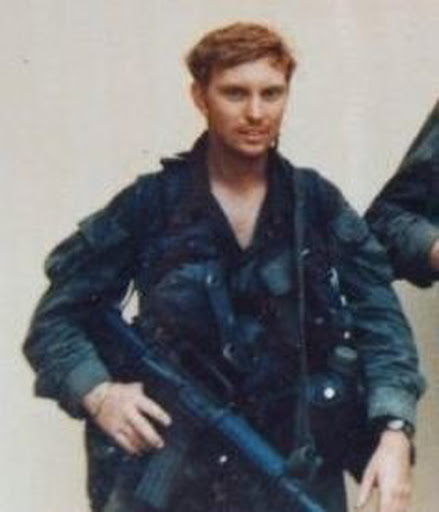
Early the next morning, launch site staff advised Shorten that a recon team was in deep trouble, in heavy contact with communist North Vietnamese Army (NVA) troops and had requested a helicopter exfiltration from the target. The choppers got to the team, and lifted it out on 150-long ropes from the jungle floor – a treacherous mission in and of itself.
By 1970, most SOG recon team members wore STABO rigs, a harness that was built into their web gear for the express purpose of having a more secure and stable outfit for when they hooked into a rope thrown down by a hovering helicopter. It had to hover because there was not enough open land available for the chopper to land and pick up the team. When the helicopter pulled the team out, the team members were secured in the STABO rigs which enabled them to fire their weapons at enemy troops and to throw hand grenades down at enemy soldiers, either dropping them directly or waiting two seconds in order to have the deadly hand-thrown ordnance explode over their heads instead of landing on terra firma.
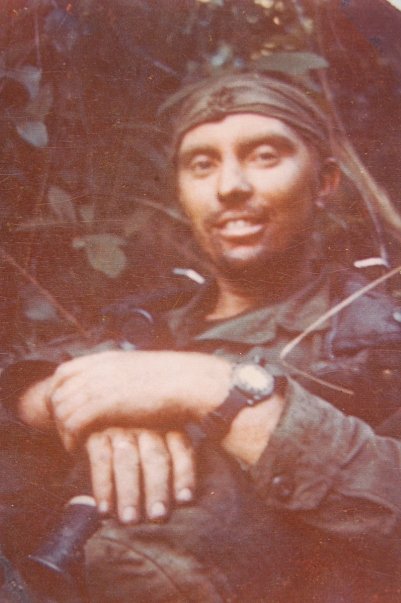
Tragically, one indigenous team member’s rope became caught on a tree during the extraction, while under heavy enemy gunfire and broke, sending that recon man to his death. During the pre-Bright Light mission briefing, Shorten was told the recon man fell 250 feet after the rope snapped and was approximately 100 to 500 meters away from the pick-up point. One of the Cobra gunship crews observed a portion of that man’s rope hanging in the tree, and radioed the exact eight-digit coordinates where the Command and Control Central (CCC) recon man died to the launch site radio operator. As Shorten was gearing up the team and conducting a final inspection of each member’s equipment, its One-Zero arrived at Dak To, fresh off of a 30-day leave. Since he was returning from a leave, he told Shorten to continue as the One-Zero for this Bright Light mission which were, as Shorten said, “the most hellacious missions that you could possibly go on during the Vietnam War. Under any combat situations, they were deadly.”
After his final briefing from the launch site commander, Shorten made a bold decision: Instead of taking in a six-man recon team — which would require two helicopters due to the height of the mountains and the heat, and increase the odds of a chopper being shot down — he decided to run a three-man mission, where the trio of SOG recon men would rappel into the jungle. There was no LZ near the dead indigenous SOG soldier who died earlier in the day. Shorten inspected the ropes in the helicopter to ensure that they were not frayed or worn, after the deadly experience earlier in the day with the Montagnard team member. Then the team launched west into Laos.
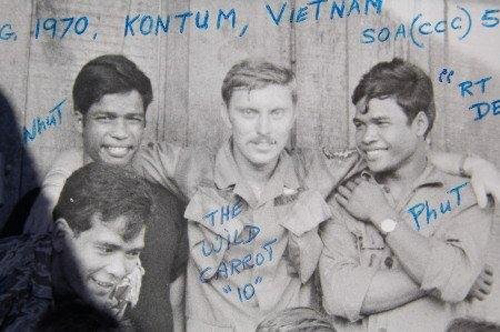
Rappel Into Laos
The helicopter took the three-man recon team to approximately 200 meters from the site where they could see the piece of rope the Cobra pilot had spotted earlier in the day. As they had practiced on many occasions previously, the three Green Berets briskly got out onto the chopper’s struts. As soon as the chopper hovered over the triple-canopy jungle, the trio jumped off the struts and rappelled downward on their separate ropes, but came to a startling realization: Their ropes weren’t long enough for them to reach the jungle floor. They were too far above ground to release from the rope. Shorten signaled a distress motion to the door gunner and the pilot began lowering deeper into the jungle slowly, cutting down some of the jungle vegetation in the process. “We finally reached the ground,” Shorten said. “We unhooked and immediately started climbing up the hill.”
As they started to move out, a Cobra gunship radioed Shorten, using his code name “Wild Carrot.” “‘Wild Carrot, this is Playboy. Do you read me?’’’
“I answered that I could hear him loud and clear,” Shorten said. “Then he told me to ‘follow him’ as he flew overhead.” In a short period of time, the pilot led them to the rope hanging in the tree and “just as he predicted, I could see the rope hanging there. We got to the area he directed us to and we found the soldier half buried in the ground. We secured his remains, hooked his rig and called the helicopters to lift us out.” Then the Cobra pilot radioed Shorten with bad news: “‘Wild Carrot, you’ve got approximately 350 enemy coming up the hill after you! You’re going to have to work fast.’”
Shorten called for the Cobra gunship to make gun runs down the hill from his three-man team’s location. In short order, he directed the fixed wing, single-engine, propeller-driven A-1 Skyraider to follow the Cobra with Cluster Bomb Unit (CBU) rocket strikes. The CBUs had canisters packed with small, explosive packets that would detonate when they hit enemy troops or the ground, shooting out hundreds of deadly fleshettes or darts. On occasion, the CBUs would be primed to explode several feet off of the ground, thus raining death on any living creature below its detonation. Shorten didn’t know which variety of CBUs the fearless Skyraider pilots used, but as soon as the fixed-wing war bird made its last run, Shorten called in the extraction helicopter, which quickly dropped the ropes the team used earlier to rappel into the Laotian, triple-canopy jungle.
Shorten hooked up the dead soldier first to one rope, then he and the other two Green Berets hooked up with the remaining three ropes. Shorten hand-signaled for lift off and called into the radio at the same time. Then, the three SOG recon men and their Montagnard comrade-in-arms entered into another terrifying, sometimes deadly transition: As the chopper slowly lifted them off of the ground and upwards through the trees, the door gunners on both sides of the Huey opened fire on the ever-increasing number of enemy soldiers who emerged from the jungle, trying to kill the Americans while the Special Forces trio was just hanging there attached to the ropes, as sitting targets. “The chopper just keeps rising and rising, agonizingly slow. The crew doesn’t want to drag us through the trees, but, at the same time, I look down and through the bare spaces in the vegetation I can see the enemy firing up at us. I let go of the dead soldier for a moment to turn my rifle towards the enemy and let loose with a full magazine” from his CAR-15. During that brief, agonizing period of time, Shorten remembers saying to himself: “Dear God. Get us out of here,” as he reloaded, fired again, then gripped the dead Montagnard soldier.
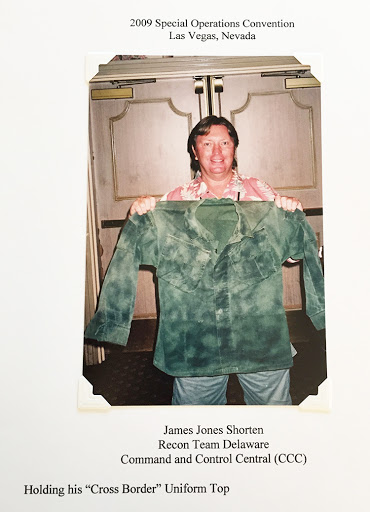
Finally, the helicopter raises the team out of the triple canopy and begins to gain air speed moving away from the enemy ground fire. When the recon men were approximately 1,000 meters above the jungle, Shorten observed an A-1 Skyraider fly beneath them, releasing another CBU rocket. He could see the white smoke as the rocket was fired from the aircraft, then as it was halfway to the ground, he saw orange smoke as it exploded with the fleshettes, raining death upon the NVA soldiers below. They were followed by Cobra gunships firing 40 mm rounds and mini-gun 7.62 mm rounds at the enemy with follow-up gun runs.
Then, the surviving Green Berets transitioned from the hot apocalyptic hell of Laos to the bone-chilling ride dangling beneath the Huey at 4,000 feet returning to the Dak To launch site – a trip that took approximately 40 minutes, where the blood and sweat from the fire fight now felt like ice as their bodies dangled perilously from the 150-foot ropes. When they finally arrived at Dak To, glad to be alive, they were greeted by their teammates who helped them stand up and begin to walk slowly, after losing most circulation to the legs – a phenomenon of momentary paralysis after landing and removing the harness due to their legs falling asleep from the lack of blood flow.
As to Shorten, being an avid aviator himself, he inspected the helicopter that inserted him and found that it had seven enemy bullet holes in it and some of the metallic skin on the rotors were peeled back from chopping away at the triple-canopy jungle as it descended slowly in order for the SF soldiers to reach the ground without injuring themselves on the rescue mission. Then the team loaded up for the return flight to CCC base in Kontum, where they were greeted by many fellow recon men. The tradition of a large greeting of men returning from a mission was established years earlier in the secret war at that base because they knew how dangerous Bright Light missions were and those at the base always greeted the returning soldiers with cold beers and promises of hot steaks and chow. And, by 1970, Shorten said CCC casualties exceeded 100 percent; several of the recon men had been wounded more than once on SOG recon missions across the fence. Some, like SFC Robert Howard, had accumulated eight Purple Hearts by the end of 1968, when he was submitted for the Medal of Honor stemming from a SOG mission into Laos.
For Shorten, a Montagnard soldier visited his room and presented the Green Beret with a Montagnard bracelet. “He said to me, ‘Thank you for risking your life to bring my brother-in-law back home. Thank you.’ That meant a lot to me because the Montagnards were good men. They were fearless soldiers and they would give their lives in a heartbeat to save an American.” Needless to say, Shorten slept well that night.
[Part 2: Two weeks later, Shorten would run another Bright Light mission – the mission that has compelled him to work with Joint POW Accounting Command and now Defense POW/MIA Accounting Agency, returning to Cambodia to help find the remains of an Air Force pilot who crashed and burned supporting a SOG recon team. A mission he hopes will take him back to Cambodia in 2018 to rescue “the only man I ever left behind,” said Shorten.]
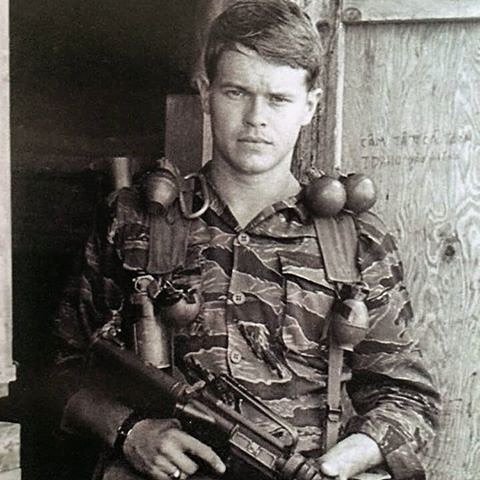
John Stryker Meyer is an author and U.S. Army Special Forces combat veteran who served two tours of duty running recon with the Studies and Observations Group, also known as MACV-SOG. Meyer has authored three books: Across The Fence: The Secret War in Vietnam — Expanded Edition, and On The Ground: The Secret War in Vietnam, that he co-authored with fellow SOG recon Green Beret John Peters. Both are available as audiobooks and e-books on Amazon.com. His third book, SOG Chronicles Volume One, is available as paperback and as an e-book on Amazon. He also has appeared in eight Jocko Podcasts in YouTube presentations, beginning with Jocko Podcast # 180.


Hey just trying to reach out to Jim jones wondering if he knew my grandfather who was one zero of rt kentucky at ccc from late 69 to early 71.